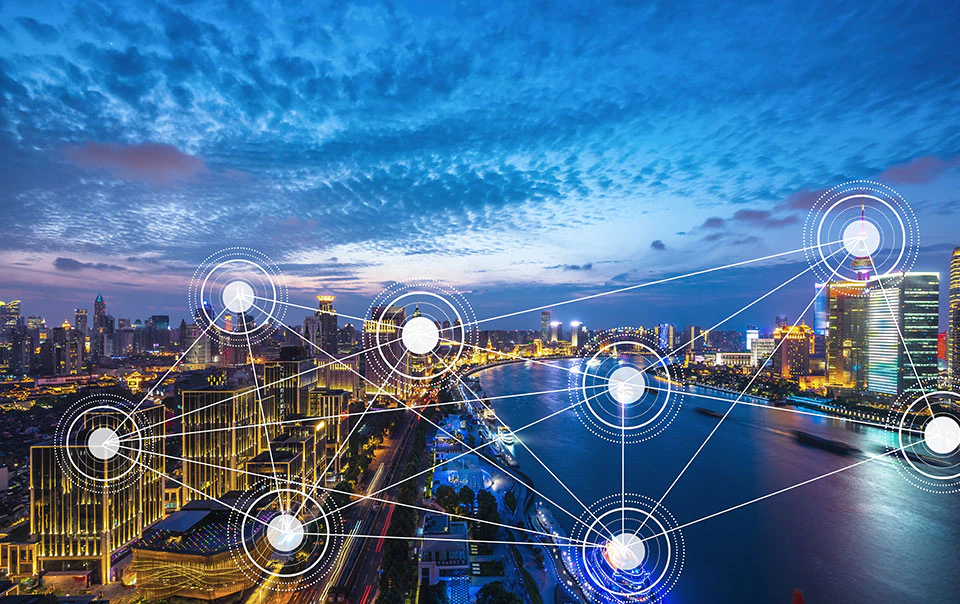5 Ways Cities, Municipalities and Other Public Entities Use Smart Tech for Public Safety


From smart streetlights to body-worn cameras, public entities are adopting "smart technologies" to improve public safety and the quality of urban life. Many of these technologies are enabled through the Internet of Things (IoT) — sensors and devices that collect and exchange data via the internet and deliver real-time insights to help cities achieve their goals.
Here are five ways cities are using smart technologies to enhance public safety. We also discuss some of the risks these technologies present and actions cities can take to minimize them.
Smart technologies for public safety
- Body-worn camera systems. Many law enforcement agencies and local governments now require wearable video recording devices. This trend has led to new, enhanced capabilities beyond capturing video footage. Now there are smart cameras that can automatically activate under certain conditions, such as when an officer opens a vehicle door, removes a firearm from a holster or goes down in the line of duty. They can also transcribe audio, stream video to a command center, and send alerts to dispatch and fellow officers in the case of an emergency.
- Smart video and audio surveillance. Smart camera technology can combine video with analytics software, enabling many valuable functions. For example, they can identify accidents as they unfold and call for emergency services, read license plates and provide data to help manage traffic flow. Audio capabilities can identify and report gunshots and sounds often connected with a threat, such as breaking glass or shouting.
- Smart street lighting systems. Street lighting is often the first smart technology that cities adopt for reduced energy consumption. Super-efficient light-emitting diode (LED) bulbs last longer and produce two to three times more light per watt than legacy bulbs. Lights also can be networked and operated remotely to deter crime; monitor traffic, pedestrians and parking; and proactively alert city operations of lamp outages and failures.
- Biometric monitoring systems. Biometric devices can identify people based on fingerprints, facial geometry, iris patterns, gaits, voice prints, DNA and human thermal signatures. Back-end systems compare these features to a database of known individuals searching for positive recognition.
- Emergency and extreme weather response. Smart technology is helping cities better predict, prepare for and respond to disasters in real time. Smart grids can promptly notify city leaders of power outages. Smart transportation systems can alert drivers of hazardous road conditions ahead and monitor the structural health of bridges. Smart sensors can monitor water levels for drought and flood, identify pipeline leaks, detect water and air pollution, and notify authorities of even minor changes.

Public Safety for the Smart City
Explore several key ways in which cities and other public entities are using smart technology to enhance public safety.
Smart technology risks
While smart technologies can offer many advantages to cities, public entities must also be prepared for these potential risks:
- Cyber risks. State and local governments are top targets for cyberattacks, which can bring city operations to a halt and lead to significant financial loss, business disruption or reputational damage. The city may also be subject to cyber claims brought against them by others.
- Law enforcement liability. Cities may find themselves liable for damage if law enforcement’s use of smart technologies leads to a wrongful act or if biometric systems fail to perform as intended. The use of body-worn cameras could also lead to invasion of privacy claims.
- Bodily injury. If damaged or defective technologies cause physical harm, this could lead to bodily injury lawsuits.
How to minimize risk
To help manage risks posed by integrating IoT devices into modern public safety protocols, public entities that adopt smart technologies should carefully review and modernize their training programs, policies and procedures for:
- Network and information security.
- Law enforcement.
- Organizational and community readiness.
Cities, municipalities and other public entities can work with their independent insurance agent or broker to ensure they have the right public entity insurance coverage in place to address the specific risks facing their town or city.



